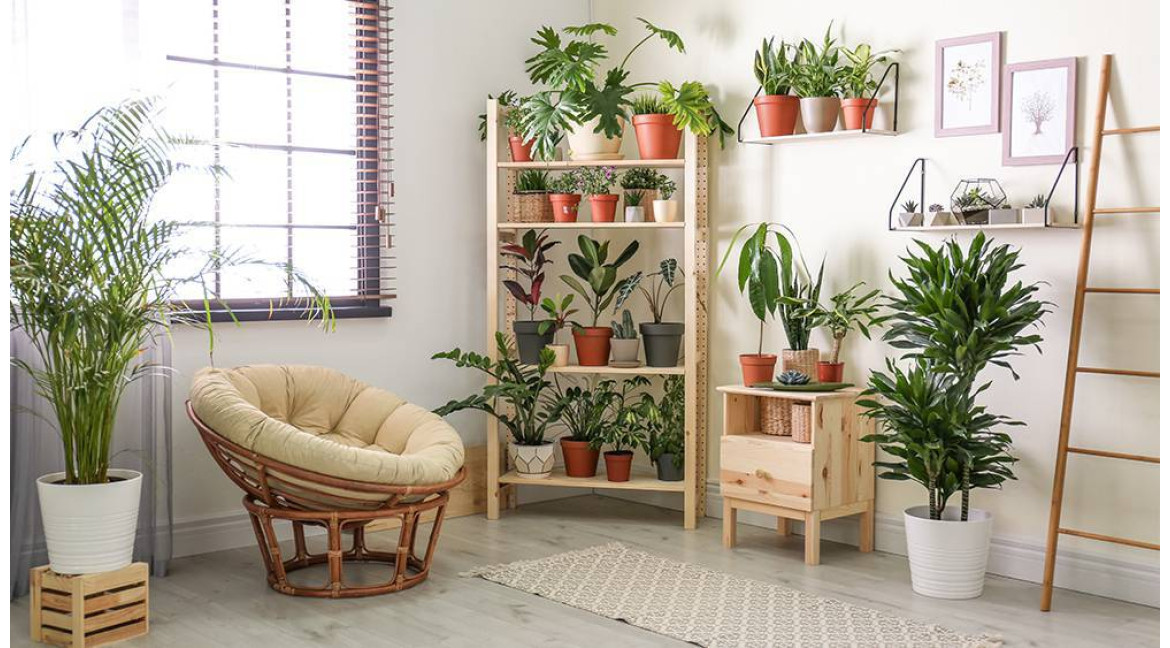

Cool Your Home Naturally: Best Indoor Plants for Indian Summers
How Do Indoor Plants Help Cool Your Home?
Last year, during the summer season, after receiving some suggestions from a local community group, my mother decided to buy a few plants for our indoor space. While we don't have a home filled with a variety of greens to show off, the few plants we brought indoors made a noticeable difference, and we absolutely loved them.
Science suggests that plants store moisture in their tissues, which is then released through a process called transpiration. This process not only helps the plants stay healthy but also contributes to improving the humidity levels inside our home. My mother was initially sceptical about providing the plants with the right amount of sunlight, but I did some research and suggested perfect spots for our summer indoor plants. I recommended placing them on the balconies or window sills, ensuring they could still get the sunlight they need while blocking the harsh rays from entering the house directly.
Soon enough, we had a natural shield in place, protecting us from the intense summer heat, and it made a huge difference indoors. The air felt fresher and cooler, and the soft green tones brought a sense of calm to the entire space. It wasn’t just about having a few plants indoors—it was about creating an environment that helped us feel more comfortable and connected to nature. Looking back, I can confidently say that incorporating summer indoor plants into our home was one of the best decisions we made.

How to Grow Succulents at Home
How to Take Care of Succulent Plants?
Taking care of succulent plants is super simple (as long as you don’t mess up and overwater them). They might just become your favourite green while simply sitting pretty on a top shelf or brightening up your dining table.
Here are the basics:
- Sunlight:
Bright, indirect sunlight works wonders for succulents. Keep them near a south-facing window, or place them together on a table on the balcony so they can soak up some gentle rays.
- Water:
Less watering is enough! It’s true, succulents do not bother you much about watering. Water the succulents after checking if the surface below the two inches of the topmost soil appears dry. In the springtime, the time duration between watering it might be about a week or more. In winter, it might trouble you even less.
- Temperature:
Keep your succulents in a warm spot. They’re not fans of cold drafts.
- Fertilizer:
Feed them with a diluted liquid fertilizer once a month during the growing seasons (spring and summer). That’s all they need to stay happy and healthy!

How to Design a Stunning Terrace Garden
How to Make a Terrace Garden at Home (on a low budget)?
Do you happen to have a small balcony or a rooftop space that you have always wished to transform? If yes, then we might have some low-budget terrace garden ideas you will love. Well, all you need now is a weekend to follow these steps, and we are all set!
Assess your Garden Area
Take a walk around your terrace or, better, bring along an expert. Adding plants means adding extra weight, so it’s important to assess the space carefully. Keep in mind that plants need regular watering, which makes proper drainage essential. After all, you don’t want water dripping onto your floor every time you give your plants a drink.
Take a paper and pen, let’s prepare a layout
Once you start planning, a flood of terrace garden ideas will come rushing in (yes, it’s that exciting!). Some might dream of adding a swing or creating a cosy little tea corner with chairs (we’ll get to that later in the article), while others might envision a terrace vegetable garden providing them with homegrown greens. The best way to begin? Take an idea of the plants you’re planning to have, and the space they will need. Put all your ideas down on paper. Think of it as becoming your interior designer for a day!
Get the desired plants
Now, as a team of plant lovers, this is our favourite part: making a list of plants! Once you have ensured that everything is perfect to set up your dream terrace garden, choose the kind of plants perfect for you. You can make your choice based on the season and how much sunlight your terrace gets. From vibrant flowering plants, fresh vegetable seeds, to those cut out for indirect but bright sunlight, the options are endless.
Head over to Urvann’s homepage and search for the varieties from your list. You can also go through the category section to explore a wide range of plants that are perfect for your space.
Prepare the garden bed or containers
It’s time you lay the base that will form the foundation of your greens. Prepare the garden soil with the soil mix by creating a well-draining layer fit for the plants. You can also research more about the kind of soil your chosen plants need to provide the best for the future of your plant babies.
Care and get results
The foundation of a great-looking garden is care. Where plants won’t bother you much, and half of the care would be out of sincere love for them, but let us break it down.
Tip: Choose the fertiliser as per the plant requirements. You can prepare a homemade fertiliser to provide the nutrients to the plants and feed them after a couple of weeks. It is required to time the nourishment needs, as excess fertiliser can also pose harm.